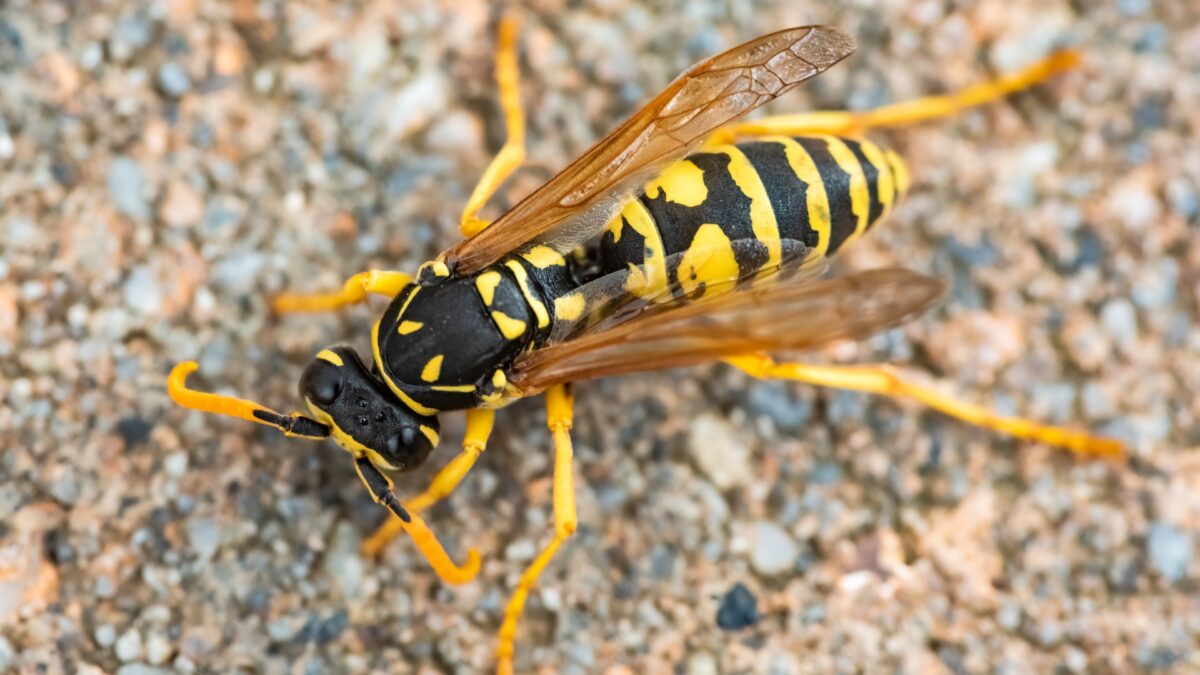The differences between stinging insects are a common topic of conversation around the Four States, especially concerning wasps, hornets, yellowjackets, and mud daubers. This week, we will explain the differences and similarities between these stinging creatures. Let’s get started!
The Wasp Family
All the stinging insects we will discuss in this blog are kinds of wasps and differ only in the family or species to which they belong. These include red wasps, mud daubers, yellowjackets, and hornets. Additionally, each species of wasp differs in its aggressiveness and habits.
Hornets
The Four States are home to two species of hornets: the bald-faced hornet and the European hornet. Both species are relatively docile and typically only swarm and sting when their nest is disturbed. They often become a nuisance when building nests on human structures. European hornets appear brownish-yellow and black, while bald-faced hornets have distinctive white faces and white-black bodies. European and bald-faced hornets both build large colonies of several hundred or more members. European hornets are mostly confined to the southern part of the Four States south of I-44.
The much publicized and feared Asian hornet is not present in the Four States area.
Red Wasps
Red wasps are probably the most common type of wasps in the Four States. They build much smaller colonies than do hornets, and their nests are distinctly paper-like, earning them their alternate name, “paper wasps.” Red wasps are easy to disturb accidentally because of their habit of building colonies in human structures like barns, under decks, dock houses, and the eves of rooves. They can become very aggressive when defending a nest.
Yellowjackets
Yellowjackets are sometimes mistaken for hornets because of their yellow and black striped bodies. However, their yellow is much brighter than that of European hornets, and their striping pattern is more distinct. Yellowjackets typically build their colonies in ground cavities. However, they may occasionally build their nests in above-ground cavities such as hollow trees. Larger yellowjacket colonies may exceed several hundred members. While they also are most likely to attack when their nest is threatened, yellowjackets are known to be on the more aggressive side of the wasp family.
Mud Daubers
Mud daubers are the least aggressive and likely to sting in the wasp family, although they are capable of stinging. They get their name from the way they build their nest, by making dried mud tubes attached to walls. Mud daubers are unlikely to sting even when their nest is threatened and will typically only resort to stinging when confined against human skin. They are chiefly a nuisance due to the unsightly nests that they build on human structures.
Do wasps die after they sting you?
Wasps of all kinds, including hornets, red wasps, yellowjackets, and mud daubers, typically survive stinging. Only female wasps are capable of delivering a sting because the part of wasp anatomy that delivers the sting is part of the female’s ovipositor (egg-laying body part). Because female wasps do not lose their ovipositor when delivering a sting, they survive and can continue to sting multiple times.
Get Help with a Wasp Problem
Bug-A-Way Pest Control can help you safely deal with nuisance wasps. Stop having your yard and porch dominated by these nasty stingers, and give us a call today!
